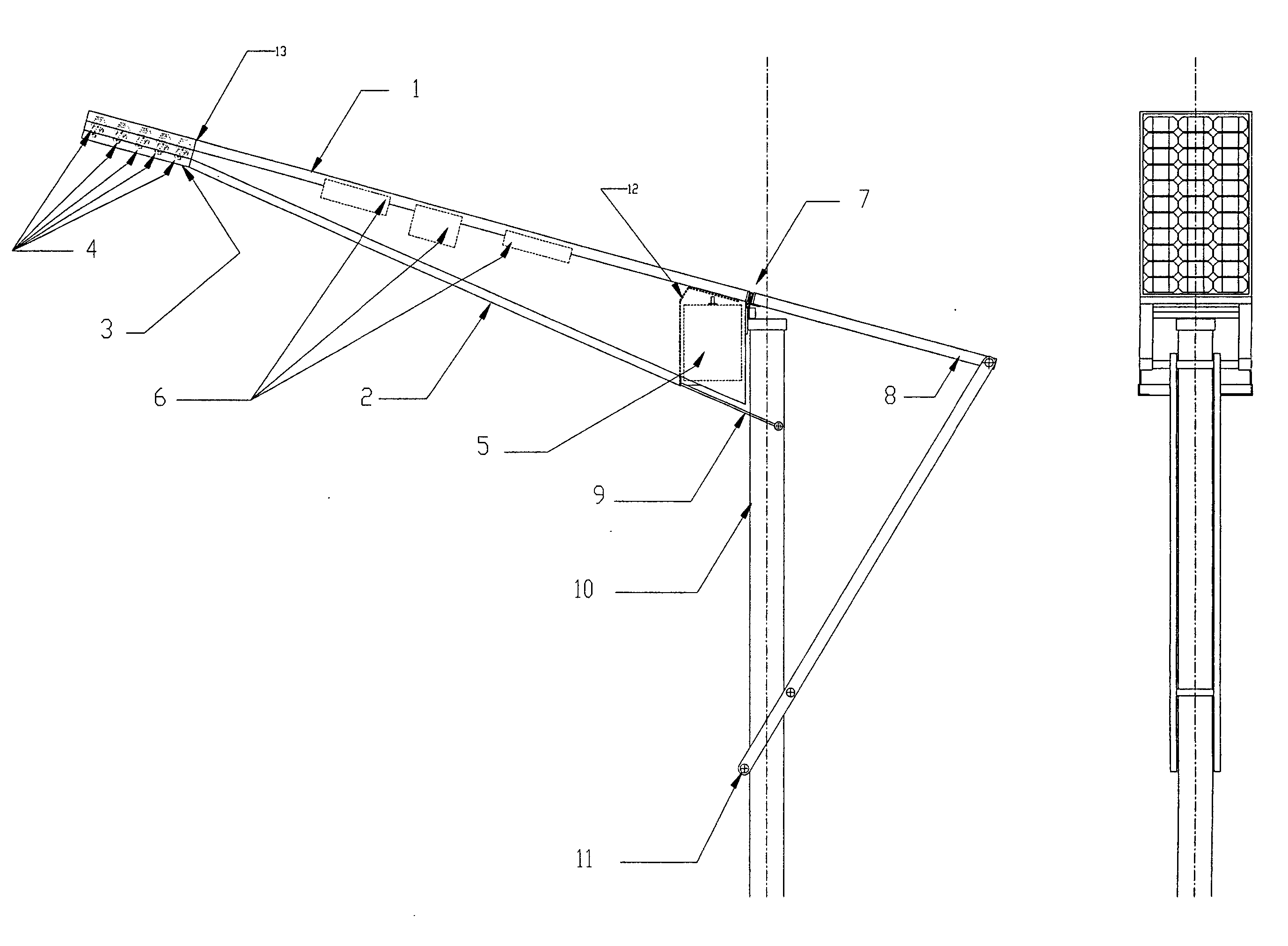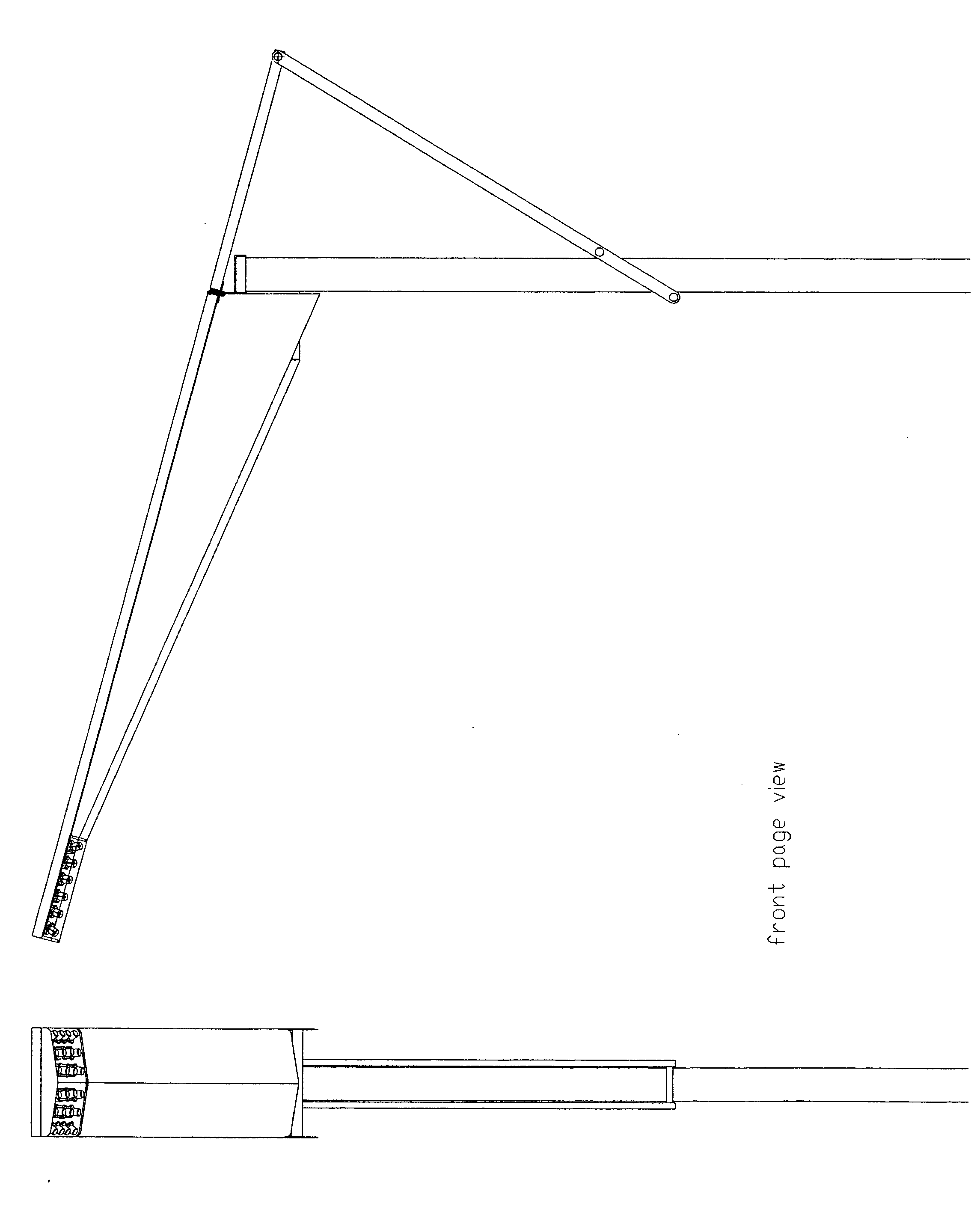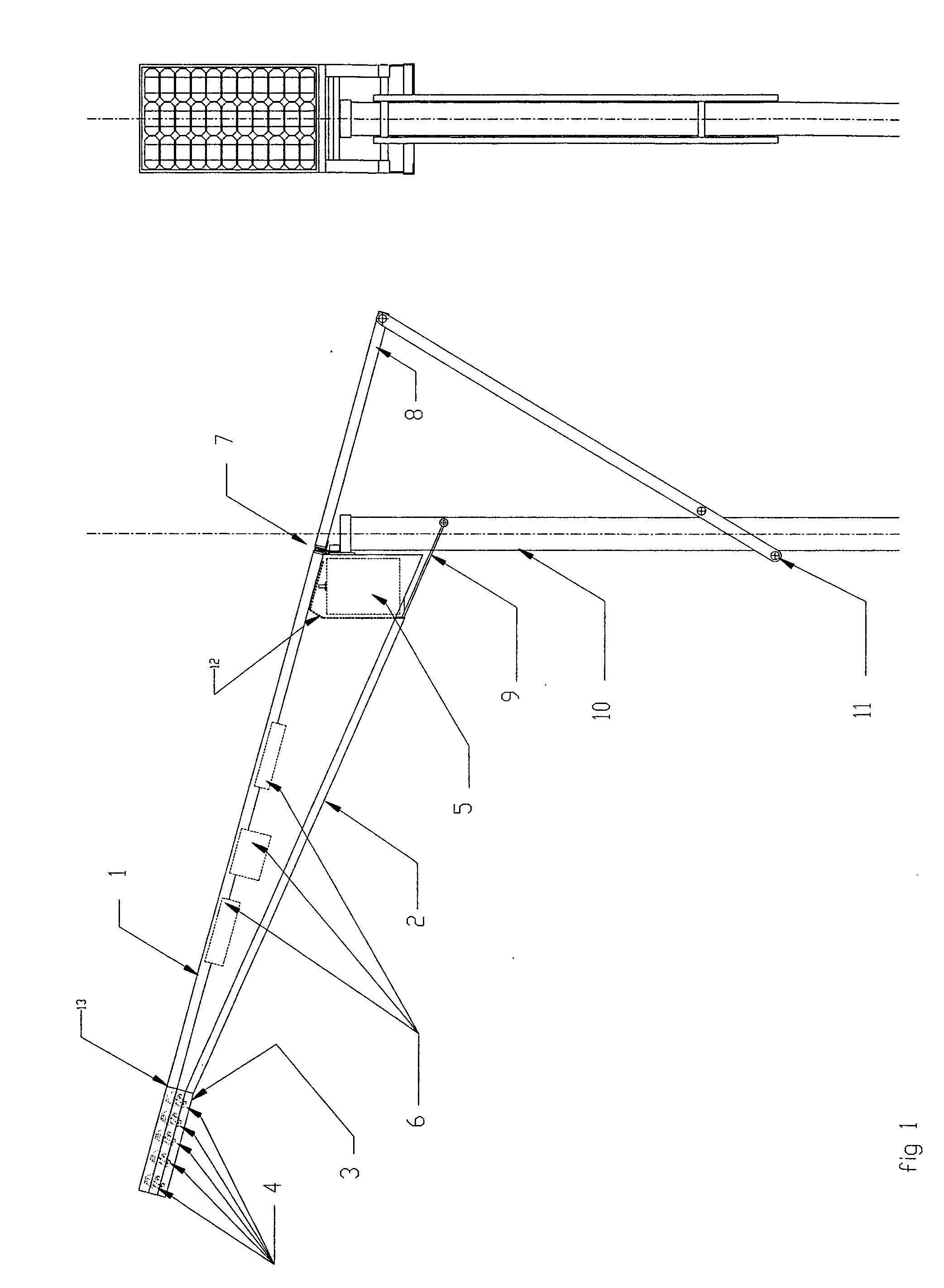Outdoors self sufficient uninterruptable luminaire
a self-sufficient, uninterruptable technology, applied in the direction of lighting and heating apparatus, lighting support devices, with built-in power, etc., can solve the problems of reducing the efficiency of lighting in general
- Summary
- Abstract
- Description
- Claims
- Application Information
AI Technical Summary
Benefits of technology
Problems solved by technology
Method used
Image
Examples
Embodiment Construction
[0067]FIG. 1, FIG. 2 and FIG. 3 show a first embodiment of an outdoors luminaire attached to a square section street lighting mast 10.
[0068] The outdoors luminaire is comprised within an integral casing FIG. 1-2 and FIG. 2-1, this casing is integrated by the active element FIG. 2-1, in powering the luminaire and resolves several important aspects: as mechanical frame structure; as weather proof protective casing where wind, rain, snow, ultraviolet and infrared radiation and dust usually impairs the light performance of the luminaire itself; as temperature controlling dissipating element; and as an effective encasing for electronic circuitries involved as safety means against fire development and electric shock hazards.
[0069] The said active elements, which, comprises the luminaire encasing are:
[0070] The outer body FIG. 1-2 and FIG. 9-3, where the shape and geometry can be varied and is easily obtained by press forming or cast processes, made from a plurality of non corrosive fer...
PUM
 Login to View More
Login to View More Abstract
Description
Claims
Application Information
 Login to View More
Login to View More - R&D
- Intellectual Property
- Life Sciences
- Materials
- Tech Scout
- Unparalleled Data Quality
- Higher Quality Content
- 60% Fewer Hallucinations
Browse by: Latest US Patents, China's latest patents, Technical Efficacy Thesaurus, Application Domain, Technology Topic, Popular Technical Reports.
© 2025 PatSnap. All rights reserved.Legal|Privacy policy|Modern Slavery Act Transparency Statement|Sitemap|About US| Contact US: help@patsnap.com



